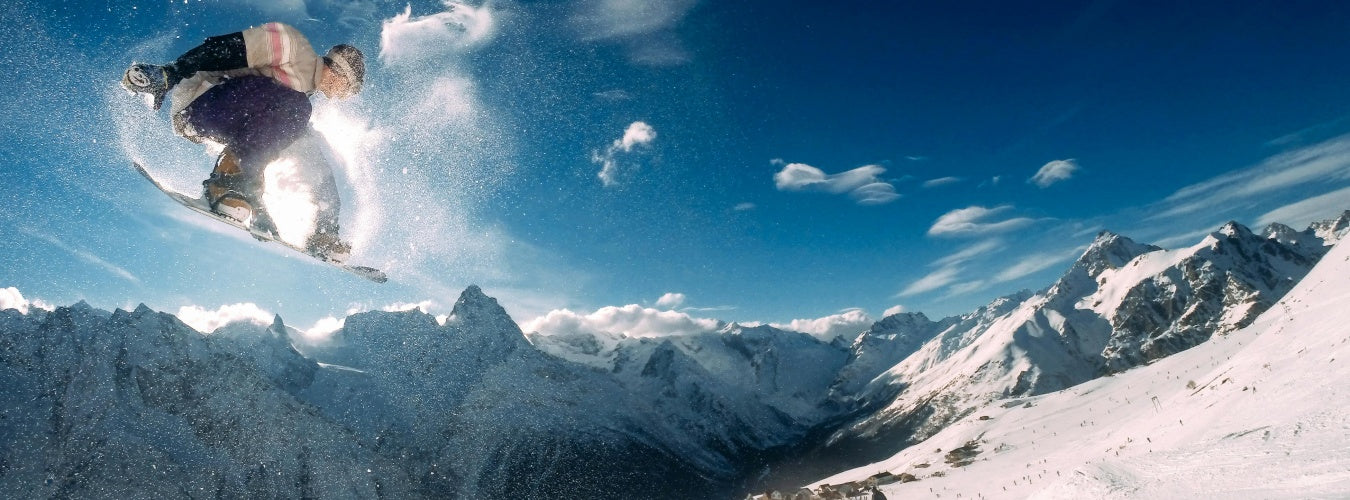Available for purchase in the USA
US

Snowboarding is an exhilarating winter sport that combines speed, skill, and balance. Whether you're drawn to the thrill of carving down snowy slopes or the challenge of performing tricks in a terrain park, learning how to snowboard can be an incredibly rewarding experience. However, for beginners, the process can be intimidating. From selecting the right gear to mastering basic movements, there’s a lot to learn. This guide will walk you through everything you need to know to start snowboarding confidently, including tips for off-season practice to maintain your progress year-round.
Before hitting the slopes, you need the proper equipment. The right gear ensures safety, comfort, and better performance.

Choosing the right snowboard depends on several factors, including your height, weight, and riding style. Beginners should opt for a softer, shorter board, which provides better control and easier maneuverability. All-mountain boards are the best choice for beginners as they offer versatility on different terrains.
Snowboard boots should fit snugly without causing discomfort. Avoid loose-fitting boots, as they can lead to poor control and potential injuries. Bindings should also be adjusted properly to keep your feet secure while allowing enough flexibility for movement.
Safety is a top priority for beginners. Make sure to wear:
A helmet to protect against head injuries
Goggles for clear vision in varying weather conditions
Gloves to keep your hands warm and protected
Layered clothing for warmth and flexibility
Your stance determines how you position yourself on the board. Snowboarders ride in one of two stances:
Regular stance: Left foot forward
Goofy stance: Right foot forward
To determine your natural stance, try sliding across a smooth floor in socks. The foot you naturally place forward is likely your lead foot. Having the correct stance is crucial for balance and control when learning how to snowboard.
Before tackling a slope, it’s important to get comfortable with basic movements.

Secure your lead foot into the binding while keeping your back foot free for movement. When ready, strap in your back foot and position yourself in a balanced stance.
A common beginner mistake is leaning too far back, which makes turning and stopping difficult. Instead:
Keep your knees slightly bent
Distribute weight evenly between both feet
Keep your eyes focused on where you want to go
Practice gliding on a flat surface to get used to the board’s feel. Shift your weight between your toes and heels to understand how the board responds.
Learning how to turn and stop effectively is essential for safe snowboarding.
Turning is controlled by shifting weight between your heels and toes:
Heelside turn: Shift weight onto your heels to slow down and turn in one direction.
Toeside turn: Shift weight onto your toes to change direction smoothly.
Falling leaf technique: Move side to side while gradually slowing down.
Hockey stop: Turn the board sideways to bring yourself to a complete stop.
Many beginners make mistakes that can slow their progress. Avoid these common pitfalls:
Leaning back too much, making it harder to control speed
Not bending knees enough, reducing stability
Looking down instead of ahead, affecting balance and movement
Snowboarding isn’t limited to the winter months. Off-season training can help maintain and improve skills year-round.
Improving leg strength, core stability, and balance enhances performance. Try:
Squats and lunges to strengthen legs
Planks and core exercises for better stability
Balance board training to simulate snowboard movements
Practicing movements indoors and engaging in similar sports can help maintain snowboarding fitness.
Skateboarding helps improve balance, coordination, and foot positioning, making it an excellent alternative when snow isn’t available.
A mat for snowboard training allows riders to practice turns, balance, and tricks from the comfort of home. It simulates the feel of snow and is an ideal tool for beginners and advanced riders alike.
For those looking to train off-season, a snowboard training mat is the perfect solution.
It is a specially designed surface that mimics the glide and friction of real snow. Made from high-quality PE material, it provides an effective way to practice movements year-round.
Year-round practice: No need to wait for winter to train
Safe environment: Practice tricks and turns without risk of injury
Cost-effective: Eliminates the need for frequent resort trips
Easy setup: Can be used indoors or outdoors
Improvement in snowboarding comes with consistent practice and smart training techniques.
Even small practice sessions can lead to significant improvement over time. Work on foundational skills regularly to build confidence.
Observing experienced snowboarders through tutorials and lessons can help you understand techniques more clearly.
Learning with others can accelerate progress. Taking lessons from a certified instructor or joining a local snowboarding community provides guidance and motivation.
Learning how to snowboard as a beginner may seem challenging, but with the right approach, it becomes an enjoyable and rewarding journey. From selecting the right gear to mastering turns and practicing year-round, consistency is key to improvement. Whether you're training on real snow or using a snowboard training mat to enhance skills off-season, dedication and practice will make a significant difference. Keep pushing yourself, stay motivated, and soon, you’ll be confidently carving down the slopes like a pro.
Leave a comment